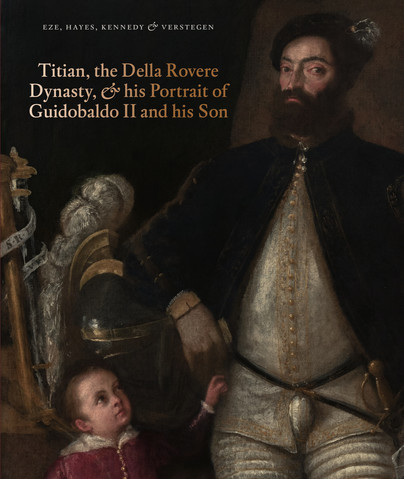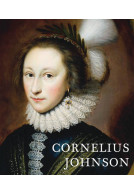Titian, the Della Rovere Dynasty, and His Portrait of Guidobaldo II (Hardback)
Pages: 96
Illustrations: 30
ISBN: 9781913645090
Published: 1st September 2021
(click here for international delivery rates)
Need a currency converter? Check XE.com for live rates
The Klesch portrait by Titian of Guidobaldo II with his son Francesco Maria represents the duke of Urbino in his full power as supreme commander of papal troops, with his heir next to him. This rare, full-length double portrait has only recently been attributed to Titian after undergoing extensive analyses and restoration, revealing a beautiful painting in non finito manner, with bravura impasto passages entirely characteristic of the master, all of which is illustrated and explained in this new book.
Titian provided portraits for the greatest men and women of Europe, Charles V and Philip II of Spain primary among them. For years the Klesch portrait was dismissed as a workshop product – partly because poor condition hid its true quality, but also because it was not believed that Titian could have deigned to create one for Guidobaldo, whose father Guidobaldo della Rovere (1514–1574) and family had a long history of patronizing the artist. Recent research, however, has thrown Guidobaldo's geopolitical significance into relief. He was supreme commander of Venice, the Papal States and then Spain. He sent thousands of soldiers to the major conflicts of his day, particularly the defense of Malta (1565) and the Battle of Lepanto (1571) and his engineers were sought throughout Europe for their ingenuity.
In this volume full of new research, Ian Verstegen reveals that Guidobaldo was not peripheral but central to Italian politics and was regarded at several points in history as a key figure who could bring peace or who could influence major conflicts on the Italian peninsula, particularly the War of Siena, and then Pope Paul IV's offensive war against Spain. Anne-Marie Eze gives the first comprehensive examination of the painting's provenance, outlining the portrait's vicissitudes and reception at different moments in its near 500-year history, reexamining received wisdom about its past ownership, and presenting new documentary evidence to expand on and fill gaps in our knowledge of its whereabouts. Finally, Matthew Hayes and Ian Kennedy reflect on the technique, date, recent conservation, and authorship of the painting, proving it to be a masterpiece that only the great Titian could have created.














